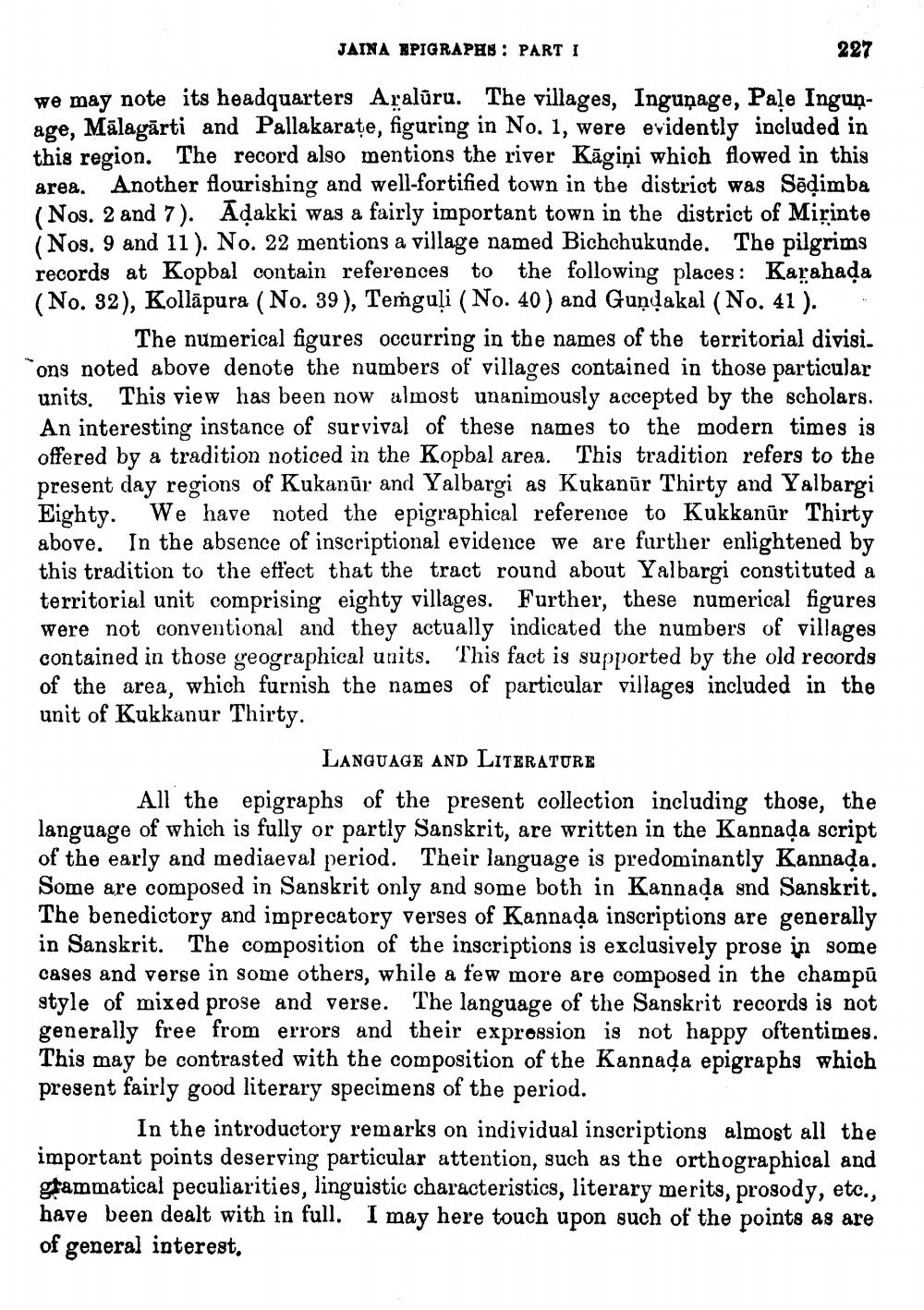________________
JAINA APIGRAPHS : PART I
227
we may note its headquarters Aralūru. The villages, Inguņage, Pale Ingunage, Mālagārti and Pallakarate, figuring in No. 1, were evidently included in this region. The record also mentions the river Kāgiņi which flowed in this area. Another flourishing and well-fortified town in the district was Södimba (Nos. 2 and 7). Adakki was a fairly important town in the district of Misinte (Nos. 9 and 11). No. 22 mentions a village named Bichchukunde. The pilgrims records at Kopbal contain references to the following places: Karahada (No. 32), Kollāpura (No. 39), Temguļi (No. 40 ) and Gundakal (No. 41).
The numerical figures occurring in the names of the territorial divisi. "ons noted above denote the numbers of villages contained in those particular units. This view has been now almost unanimously accepted by the scholars. An interesting instance of survival of these names to the modern times is offered by a tradition noticed in the Kopbal area. This tradition refers to the present day regions of Kukanūr and Yalbargi as Kukanūr Thirty and Yalbargi Eighty. We have noted the epigraphical reference to Kukkanūr Thirty above. In the absence of inscriptional evidence we are further enlightened by this tradition to the effect that the tract round about Yalbargi constituted a territorial unit comprising eighty villages. Further, these numerical figures were not conventional and they actually indicated the numbers of villages contained in those geographical units. This fact is supported by the old records of the area, which furnish the names of particular villages included in the unit of Kukkanur Thirty.
LANGUAGE AND LITERATURE All the epigraphs of the present collection including those, the language of which is fully or partly Sanskrit, are written in the Kannada script of the early and mediaeval period. Their language is predominantly Kannada. Some are composed in Sanskrit only and some both in Kannada snd Sanskrit. The benedictory and imprecatory verses of Kannada inscriptions are generally in Sanskrit. The composition of the inscriptions is exclusively prose in some cases and verse in some others, while a few more are composed in the champū style of mixed prose and verse. The language of the Sanskrit records is not generally free from errors and their exprossion is not happy oftentimes. This may be contrasted with the composition of the Kannada epigraphs which present fairly good literary specimens of the period.
In the introductory remarks on individual inscriptions almost all the important points deserving particular attention, such as the orthographical and gtammatical peculiarities, linguistic characteristics, literary merits, prosody, etc., have been dealt with in full. I may here touch upon such of the points as are of general interest.




